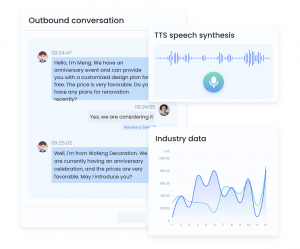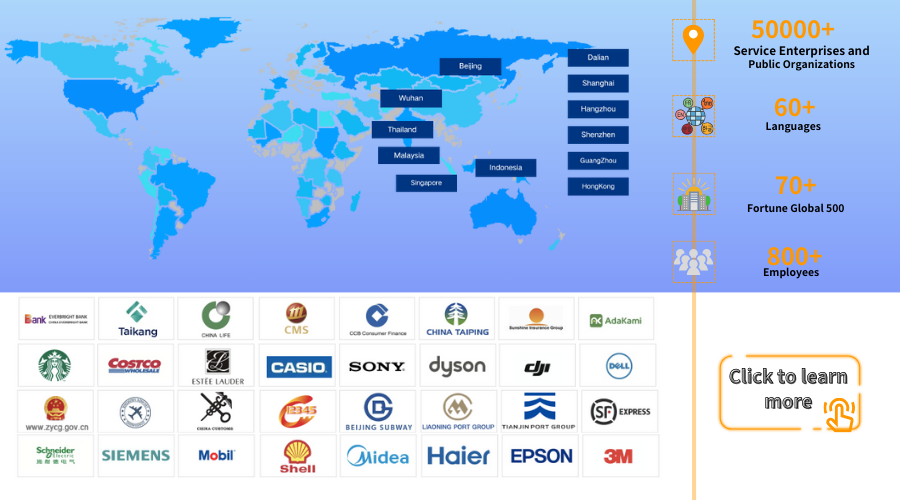The Future of Voice: A Revolution in Speech Technology within the Intelligent Customer Service Sector
Article Summary:The intelligent customer service sector is undergoing a profound transformation driven by the rapid development of voice technology. This evolution is gradually constructing a new ecosystem composed of voice robots and advanced call centers. This article aims to delve into the latest advancements in voice technology within the intelligent customer service field, exploring how it is reshaping the landscape of customer service.
Table of contents for this article
- The Evolution of Intelligent Customer Service: From Passive Response to Proactive Service
- Speech Recognition: The First Key to Unlocking Interaction
- Natural Language Processing: The Art of Understanding and Responding
- Sentiment Analysis: The Delicate Touch of Sensing User Emotions
- Speech Synthesis: Bestowing Machines with "Authentic" Voice
- Case Studies: Practical Applications of Voice Intelligent Customer Service Across Industries
- Challenges and Prospects
- Choose Udesk to Experience the Charm of Voice
- 》》Click to start your free trial of voice chatbot, and experience the advantages firsthand.
In this era of digital transformation, each technological leap redefines our lifestyles and work modes. Among these advancements, the intelligent customer service sector is undergoing a profound transformation driven by the rapid development of voice technology. This evolution is gradually constructing a new ecosystem composed of intelligent voice assistants, voice robots, and advanced call centers. This article aims to delve into the latest advancements in voice technology within the intelligent customer service field, exploring how it is reshaping the landscape of customer service and examining the implications of this trend for future society.

Voice is a crucial bridge for human communication. With the rise of artificial intelligence, voice has transcended its role as a simple medium for information transmission and has become the key to unlocking a new era of intelligent services. Advances in intelligent voice technology, particularly in subfields such as natural language processing, speech recognition and synthesis, and emotion analysis, are gradually enabling machines to "understand" humans, achieving deeper levels of interaction and comprehension.
The Evolution of Intelligent Customer Service: From Passive Response to Proactive Service
Early Call Centers: Traditional call centers relied heavily on human operators to answer calls, handle customer inquiries, and address complaints. This approach was inefficient and costly.
Initial Automation Attempts: With the introduction of IVR (Interactive Voice Response) systems, some simple queries could be handled automatically. However, user experience was limited by the constraints of pre-set scripts.
Era of Intelligent Customer Service: Nowadays, intelligent customer service systems integrated with advanced voice technologies can understand complex contexts, provide personalized solutions, and even predict and fulfill customer needs. This marks a significant transformation in customer service models. Additionally, combining early call center functions with current voice technologies has led to the development of new intelligent business models.
Speech Recognition: The First Key to Unlocking Interaction
Speech recognition technology is the cornerstone of intelligent customer service. It converts users' spoken commands into machine-readable text. Breakthroughs in deep learning algorithms, particularly the application of convolutional neural networks (CNN) and recurrent neural networks (RNN), have significantly enhanced recognition accuracy and robustness. This progress ensures that user intentions can be captured clearly even in noisy environments, laying a solid foundation for rapid subsequent responses.
Natural Language Processing: The Art of Understanding and Responding
- Intent Recognition
By analyzing user input, intent recognition determines the underlying needs, such as inquiries, complaints, or suggestions.
- Dialogue Management
This involves building multi-turn dialogue models to ensure contextual coherence, making conversations smooth and natural.
- Knowledge Graphs
Integrating internal and external resources of an enterprise, knowledge graphs form vast knowledge bases to provide users with precise answers.
Sentiment Analysis: The Delicate Touch of Sensing User Emotions
Sentiment analysis endows intelligent customer service with the ability to "read minds" by analyzing features such as tone, rhythm, and intensity of speech to identify users' emotional states. This functionality is crucial for enhancing service experiences because it allows the system to adopt a more gentle and understanding attitude when customers exhibit dissatisfaction or anxiety, effectively easing tense situations.
Speech Synthesis: Bestowing Machines with "Authentic" Voice

Advancements in TTS (Text-to-Speech) technology enable intelligent customer service to engage with users in a more natural and human-like voice. The implementation of personalized voice customization and emotive intonation further enhances the authenticity and affinity of interactions.
Case Studies: Practical Applications of Voice Intelligent Customer Service Across Industries
- Financial Industry
Provides 24/7 uninterrupted consultation services, swiftly handles account inquiries, and transaction operations, thereby increasing customer satisfaction.
- Health and Medical Services
Enables appointment scheduling and symptom inquiries via phone or apps, particularly reducing face-to-face contact risks during epidemic periods.
- Retail E-commerce
Utilizes voice shopping assistants to recommend products based on user preferences, simplifying the shopping process.
- Public Services
Utilizes intelligent voice technology to swiftly respond to public needs through government hotlines and emergency rescue services.
Challenges and Prospects

Despite significant achievements in intelligent customer service voice technology, it still faces numerous challenges, including privacy protection, data security, and accuracy in cross-language communication. Looking into the future, as technology continues to evolve, we anticipate:
Advanced emotional intelligence: not only recognizing emotions but also simulating emotional feedback to provide a more humane communication experience.
Integration of edge computing: reducing data transmission latency and enhancing real-time responsiveness.
Seamless integration across all channels: achieving seamless switching between various interaction methods such as voice, text, and video to meet diverse demands.
Cross-cultural communication: enhancing understanding and adaptability to different languages, dialects, and cultural backgrounds.
Choose Udesk to Experience the Charm of Voice
The development of intelligent voice technology is gradually constructing a limitless communication environment, making future customer service smarter, more efficient, and more intimate. Udesk has been dedicated to the research and development of intelligent customer service, and its range of products, including call centers and voice robots, are highly acclaimed, earning numerous honors in the field of intelligent customer service. In this voice-led future, the boundary between humans and machines will become increasingly blurred. By choosing Udesk, your service experience will be redefined, ushering in an unprecedented era of intelligent service.
》》Click to start your free trial of voice chatbot, and experience the advantages firsthand.
The article is original by Udesk, and when reprinted, the source must be indicated:https://www.udeskglobal.com/blog/the-future-of-voice-a-revolution-in-speech-technology-within-the-intelligent-customer-service-sector.html
Future of VoiceVoice ChatBotVoice Tool in Customer Service

 Customer Service& Support Blog
Customer Service& Support Blog



